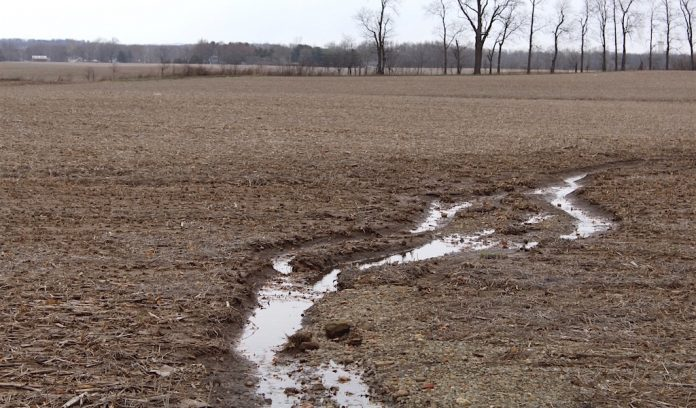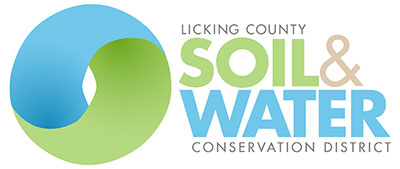
Fixing Gullies the Right Way
Late harvest on beans and field corn last year forced many producers to plant cover crops late. Some fields were left bare over winter and into early spring. A wet fall, followed by intense early spring rainfall led to many fields with considerable gully erosion.
While a common impulse may be to till in the gullies, take a moment to examine why the gullies formed in the first place. Was it because of increased rainfall rates and/or a lack of water infiltration? Was it from concentrated flows from neighboring land? Was it because water concentrated in a wheel track, furrow, or end row? Each erosion cause may need a different practice to reduce the chance of gully erosion in the future.
Cropping methods to reduce erosion include cropping perpendicular to the slope, strip cropping, no-till, and diverse crop rotation. Cropping perpendicular to slopes reduces the chance of gully formation. Strip cropping with contouring slows the velocity of water on erosive soils.
Continuous no-till and adequate crop residue keeps more water in the soil profile by improving soil structure. Tillage destroys soil structure and reduces residue, leaving the soil surface bare. A diverse crop rotation builds soil fertility and increase water holding capacity. Licking Soil & Water has two no-till seed drills available for rent.
Using cover crops is another method to reduce soil erosion. Planting cover crops as early as possible gives the cover crop more time to establish and be effective from late fall through early spring. Consider an aerial application on fields that are notoriously difficult to get into late in the year. Licking Soil & Water and Muskingum Watershed Conservancy District offer a cover crop cost-share program.
In places with highly concentrated flows, soil needs extra protection to keep it from washing away. A grassed waterway protects and anchors the soil. Size the waterway to handle heavy rainfall and rain that lasts for over 24 hours. A properly designed grassed waterway need maintenance and typically has a lifespan of 10 years. Our federal USDA’s partners, NRCS and FSA offer grassed waterways as part of the continuous CRP program.
For more information about the services mentioned above, contact Dave Grum, agtech@LickingSWCD.com, 740-670-5330.
Adapted from Stark Soil & Water.



